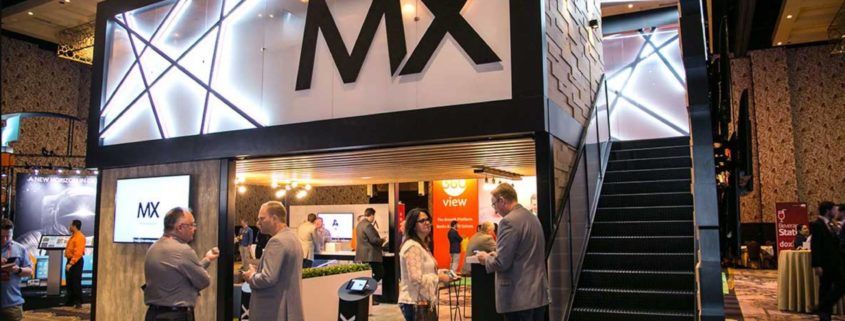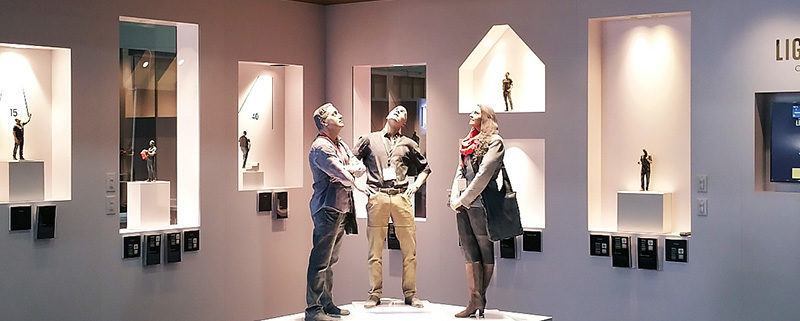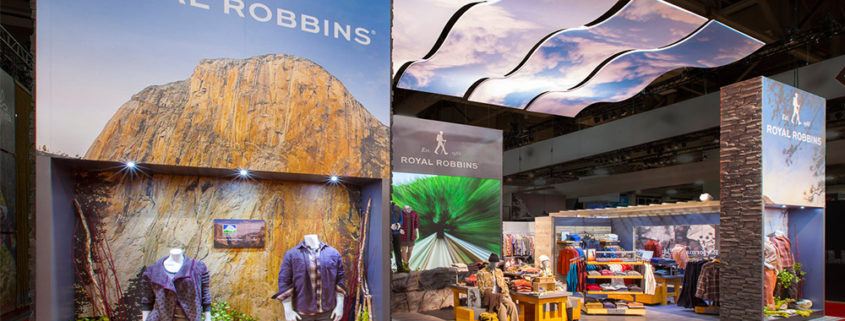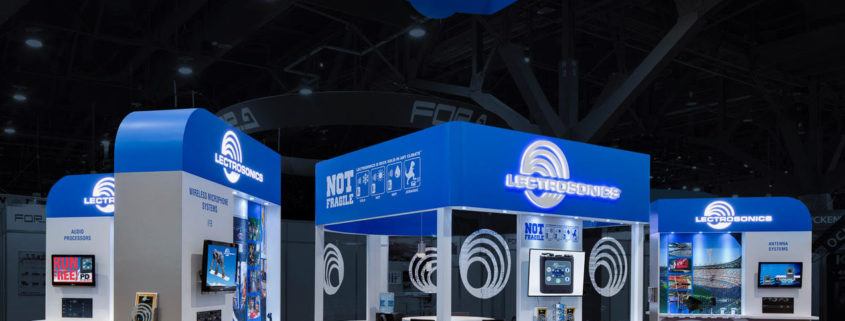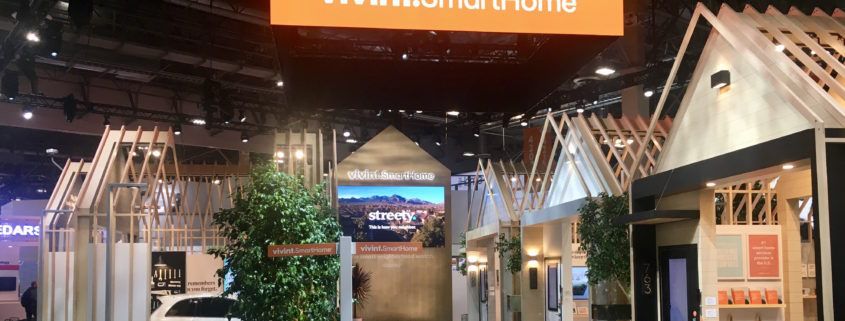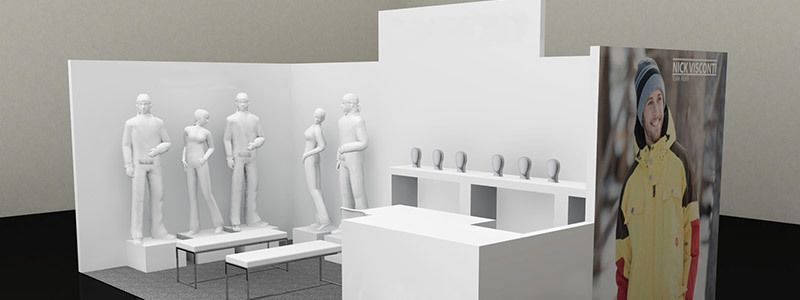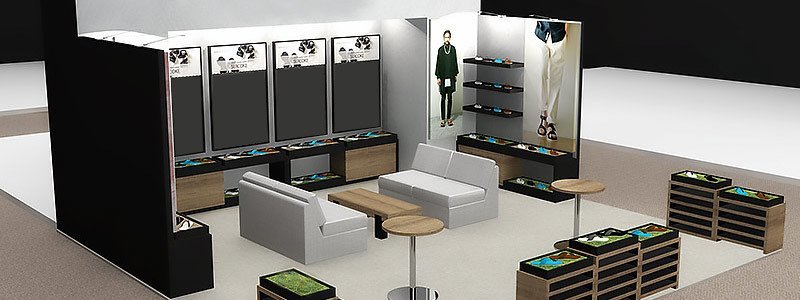Drumroll please . . . it’s show time! The moment you’ve been waiting for: the time has come for your new trade show booth design to be introduced to the public. This is probably the most anxious yet most exciting part of the entire exhibit booth process. On the one hand, you’re nervous about whether all of the final details will come together once they’re on the trade show floor, but on the other hand, you’re thrilled that it’s finally time for the big reveal. To help calm some of your pre-show jitters, let’s walk through the experience of having a trade show booth at an exhibit.
Shipping
Before we get ahead of ourselves, let’s take a look at shipping your booth and supplies to the show. This is a crucial stage and a chance for you to save some serious time, money, and headache later on. Your booth will be loaded into crates, which are then in turn loaded onto trucks to be transported to the show. Now is the time to rack your brain for anything else you’ll need during the show and get it to the booth company in time to get it on the truck. We can’t stress this enough — catalogs, giveaway items, any non-sensitive products that can travel separately from your employees, even pallets of water bottles to help keep your team hydrated during the show — all of that should be given to the booth company in advance in order to ship it down with the booth.
Why should you do this? First, it saves you time. If you ship it to the exhibit hall separately, that means you and your show team will also have to cart it up from the on-site shipping center to your booth. If you have boxes and boxes of materials for the show, this can take up valuable pre-show time that your team could be devoting to other efforts.
Next, it saves you a lot of money. If you’ve ever had to overnight a 30-pound box of catalogs to an on-site FedEx location, you know what we’re talking about. Those little onesy-twosy shipments add up very fast and cost multiple times more than it would to add a bit of weight to your freight shipment with the booth. Many times, you won’t be charged extra at all for shipping those extra items with the booth. Make your Finance team happy and send as much as possible with the booth.
Finally, it saves you a huge headache. When the day comes for you to fly or drive down to the trade show, the last thing you want is to be stressing over whether you remembered X or forgot Y. Plan ahead, make a list of all of the items that are going to ship with the booth, and then trust your booth design company to get everything there on time. If you work with a full-service company such as mackenzie EXHIBIT, we’ll even put all of your supplies into the storage sections of your booth so that everything is squared away before you arrive on the show floor.
Trade Show Booth Set Up
There are two ways to go about handling the set up of your trade show booth: do it yourself, or let the professionals handle it.
We’ve seen companies go the DIY route in an attempt to save some money, but what they don’t take into consideration is the fact that all of those employees who are being sent down to the show early to handle set up need hotel rooms, per diem budgets, rental cars, and more. It might seem like you’re saving a few bucks by having your own team set up the booth rather than letting the booth company handle it, but in the long run, the added expense of an advance crew plus the dangers of fatiguing your crew before the show even starts end up outweighing any potential benefits. We only recommend going the DIY set up route if your booth is small, maybe around a 10′ x 10′.
The other option is essentially set-it-and-forget-it: let the booth design company handle the set up of your booth. This brings a level of peace of mind to the trade show experience that is priceless. Before the show, you’re already stressed with thinking about the upcoming meetings, interviews, demonstrations, and more — don’t add the stress of having to assemble a booth to your plate.
If you choose to have your booth design company handle set up, they will send a crew down a couple days in advance of the exhibit and have the majority of the booth complete before you even arrive. This way, when you arrive you’ll be able to walk in, make any last-minute tweaks that you’d like, arrange the items you freight shipped with the booth in a way that’s most convenient for you and your team, and you’re ready for the show.
Pre-Show Final Prep
The night before the show, if you had your booth design company handle set up, they will also likely take the time to run a vacuum through the booth and make sure everything is polished up and ready for the public the next day. Take the time to walk through your booth at the very end of the day before the show so that there aren’t any last-minute surprises and you can have confidence that everything will be squared away when you walk in the next morning.
Something to consider having done on the first morning prior to the show opening to the attendees is to have professional pictures taken. Reputable booth companies, such as mackenzie EXHIBIT, will be able to schedule this for you. Having professional images taken of your booth will give you great material for social media posts, blog posts, subscriber email blasts recapping the show, and in-office decoration to proudly display your booth design.
As a final prep before the show opens, make sure your catalogs, giveaways, etc. are stored in a logical method and that you’ve segmented everything out for what day they should be used on, that way you don’t run through your entire stash on the first day of the show. Take the time to pick up water, snacks, and anything else that will help your team make it through the long days ahead on the show floor.
Tear Down Time
You survived! At this point, the show floor has closed to attendees and you’re left with a sense of accomplishment because you actually made it through the trade show.
As with set up, there are two ways to handle tear down: do it yourself, or let the pros take over.
If you decide to handle tear down yourself, rather than be able to triumphantly leave the show floor at the end of the day, you’ll find yourself sitting in the middle of your booth waiting for the crates to be delivered so that you can pack up. The waiting on its own can literally take hours, and there’s no way to know exactly when the crates will arrive. After waiting for who-knows-how-long for the crates to show up, only then can your team begin packing everything away. If this isn’t done correctly, you risk damaging booth segments in transit. Trade show veterans will tell you the demeanor of do-it-yourselfers vs. those who let the trade show booth company handle tear down. The first group looks defeated when the show closes, because they know the work isn’t over yet. The second group gets to gather around for high fives and then march off to go grab dinner and celebrate the end of the show. Which group would you rather be?
Those who let the professionals handle tear down will be able to pull down whatever product needs to travel with company personnel, and the rest will be packed up by the booth company and carefully transported back to their warehouse where it will be waiting for you. Easy!
Post-Show Dust Settling
Chances are your employees stashed some of their personal items in the booth during the show and forgot them there. Or you left non-sensitive products in the booth because you didn’t feel like carting them back with you after the show. Or you have leftover catalogs. Whatever the case may be, you likely have a few things left over that need to be picked up from the booth company’s warehouse.
While your booth company will be patient as you unwind from the stress of the show, try not to leave your items there for weeks on end — this takes up precious space in their warehouse and leads to you forgetting what on earth it was that you left behind. Bite the bullet and try to take care of this step as quickly as possible after the show.
Ta-da — you did it! The show is done, your booth was a success, and you have great pictures to remember everything by. Aren’t you glad you decided to work with a company like mackenzie EXHIBIT? There’s a reason why once companies decide to work with a booth design company rather than handling things themselves, they rarely every go back to their old ways.
We hope you’ve enjoyed this four-part series about the trade show booth design process. If you’d like to read through the other parts, here they are:
Creating a Trade Show Booth Part 1: Ideation
Creating a Trade Show Booth Part 2: Mockup
Creating a Trade Show Booth Part 3:
Ready to get started or have some more detailed questions on the booth design process? Give us a call at 801-621-7500 or email us here.

